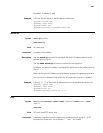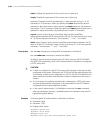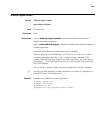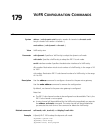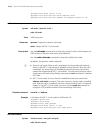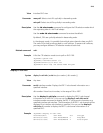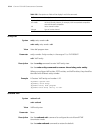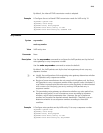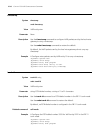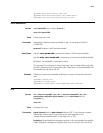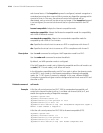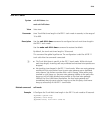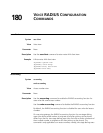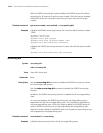
2715
By default, the inband DTMF transmission mode is adopted.
Example # Configure the out-of-band DTMF transmission mode for VoFR entity 10.
<Sysname> system-view
[Sysname] voice-setup
[Sysname-voice] dial-program
[Sysname-voice-dial] entity 10 vofr
[Sysname-voice-dial-entity10] outband vofr
seq-number
Syntax seq-number
undo seq-number
View VoFR entity view
Parameter None
Description Use the
seq-number command to configure the VoFR packets sent by the local
voice gateway to carry a sequence number.
Use the
undo seq-number command to restore the default.
By default, the VoFR packets sent by the local voice gateway do not carry any
sequence number.
n
■ Usually, the configuration of the originating voice gateway determines whether
VoFR packets carry a sequence number.
■ Routers of some manufacturers do not comply with the above rule, but force
VoFR packets to carry a sequence number when a specific codec is adopted. If
a call failure or severe voice distortion occurs when the device is interconnected
with a router of a third party, you can try making VoFR packets carry a
sequence number.
■ The terminating voice gateway can determine whether any voice packet loss,
duplicate voice packet, or out-of-sequence occurs according to sequence
numbers, which helps compensate voice. However, the use of sequence
numbers will increase the required network bandwidth. Therefore, you can
determine whether to use sequence numbers according to the actual
condition.
Example # Configure voice packets sent by VoFR entity 10 to carry a sequence number.
<Sysname> system-view
[Sysname] voice-setup
[Sysname-voice] dial-program
[Sysname-voice-dial] entity 10 vofr
[Sysname-voice-dial-entity10] seq-number



